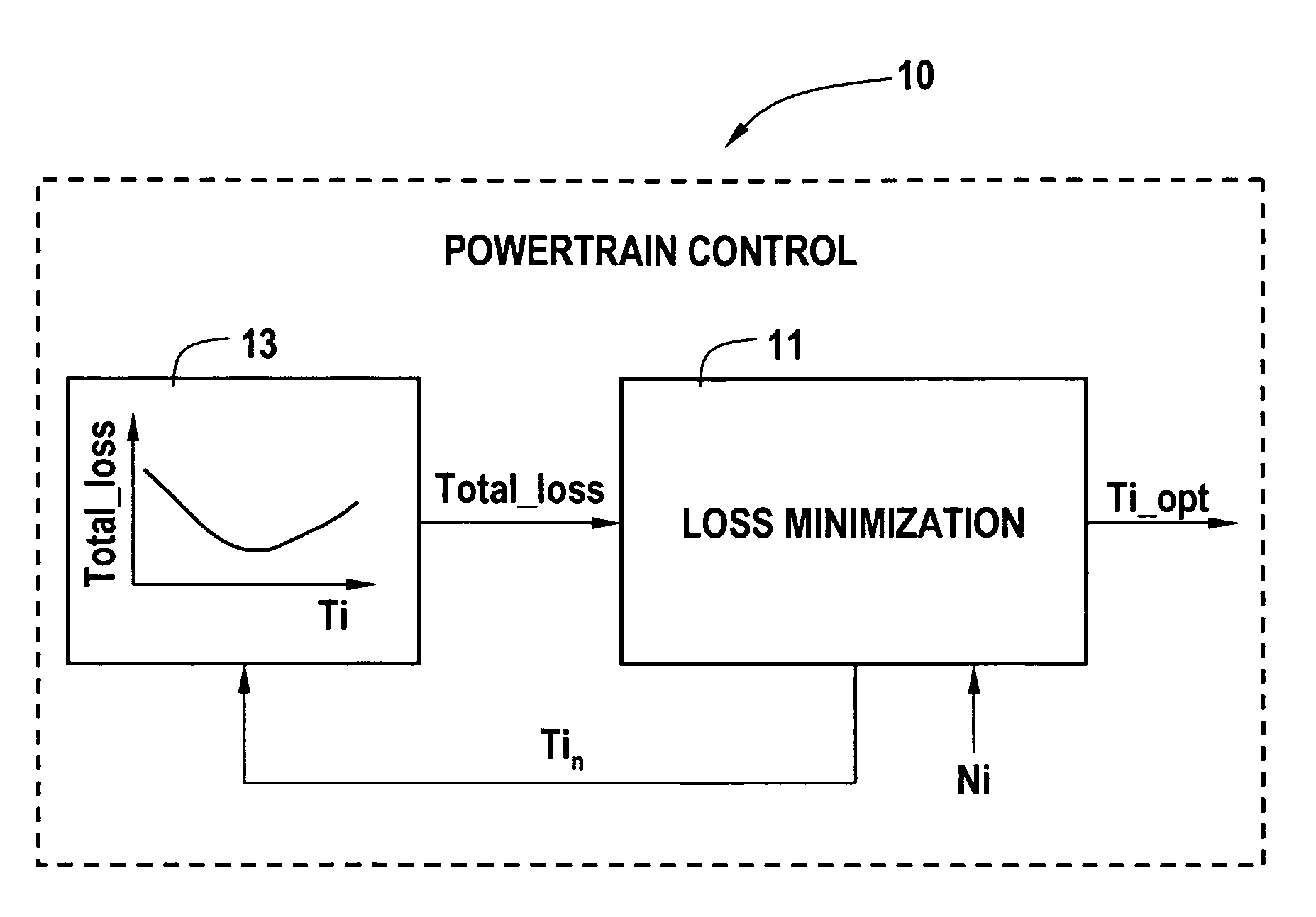Cost structure method including fuel economy and engine emission considerations
a technology of engine emission consideration and cost structure, which is applied in the direction of electric control, machines/engines, instruments, etc., can solve the problems of high engine efficiency operating conditions and undesirably high engine emissions
- Summary
- Abstract
- Description
- Claims
- Application Information
AI Technical Summary
Benefits of technology
Problems solved by technology
Method used
Image
Examples
Embodiment Construction
[0015]In an exemplary use or implementation of the present invention, a powertrain control for a hybrid electric vehicle establishes a preferred operating point for an internal combustion engine. For example, in FIG. 1, powertrain control 10 operating in microprocessor based control hardware (not separately shown) establishes a preferred engine torque operating point (Ti_opt) through a loss minimization routine 11. Loss minimization routine evaluates a plurality of available torque operating points (Tin) and associated aggregate powertrain system loss data (Total_loss) to establish a preferred engine torque operating point (Ti_opt). Aggregate powertrain system power loss data is referenced from predetermined data structures comprising system characterized loss data including certain objectively quantifiable power losses. Additional detail regarding such powertrain control is disclosed in detail in co-pending and commonly assigned U.S. patent application Ser. No. 10 / 799,531 now U.S. ...
PUM
 Login to View More
Login to View More Abstract
Description
Claims
Application Information
 Login to View More
Login to View More - R&D
- Intellectual Property
- Life Sciences
- Materials
- Tech Scout
- Unparalleled Data Quality
- Higher Quality Content
- 60% Fewer Hallucinations
Browse by: Latest US Patents, China's latest patents, Technical Efficacy Thesaurus, Application Domain, Technology Topic, Popular Technical Reports.
© 2025 PatSnap. All rights reserved.Legal|Privacy policy|Modern Slavery Act Transparency Statement|Sitemap|About US| Contact US: help@patsnap.com



